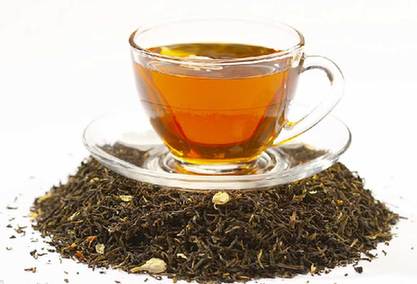Types of Chinese tea
Post-fermented tea
| File photo: Post-fermented tea |
Post-fermented tea, known in China as "hei cha," is made with tea leaves that have undergone a long period of fermentation after they are fried and rolled. The fermentation process is extremely exacting. Only a Tea Master after decades of study is capable of producing this type of tea. After the unique process, which is kept a closely-guarded secret, the finished tea takes on a dark brown color.
Unlike most Chinese teas whose taste and aroma fade with age, post-fermented tea can actually be aged to improve its flavor. The fermented leaves last much longer than other types of tea. Aged tea, especially Pu-Er tea from southwest China's Yunnan Province, is rare and extremely valuable. As a Chinese specialty, post-fermented tea is usually compressed into different shapes for storage and transport convenience. In the past, post-fermented tea was the most exported tea in China, which was shipped as far away as Russia. It is also the most popular tea in areas of China with large ethnic minority populations. People from Tibetan, Mongolian and Uyghur ethnic groups consider post-fermented tea an essential part of their daily lives.
The most famous brand of this variety is the Pu'er Tea from southwest China's Yunnan Province. The large-leafed tea is gathered from trees that thrive in Yunnan's varying climate and acidic soil. Famous as a medicinal tea, it is believed to aid digestion, reduce cholesterol, lower blood pressure, reinforce the immune system and help prevent cancer. The smooth, dark Pu'er tea has a rich and distinctively earthy flavor.






Go to Forum >>0 Comment(s)